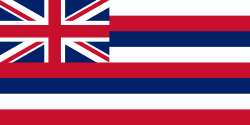This article needs to be updated.(June 2024) |
| Aviation in Hawaii | |
|---|---|
| Aviation in the United States | |
 Hawaii State Flag | |
| Airports | |
| Commercial – primary | 7 |
| Commercial – non-primary | 1 |
| General aviation | 6 |
| Military and other airports | 7 |
| First flight | |
| 2 March 1889 (Lighter than air), December 1910 (Heavier than air) [1] | |
Hawaii's first aeronautical event was on 2 March 1889, when Emil L. Melville hung from a trapeze in a balloon. Hawaii's first aircraft flight was on 31 December 1910 by a Curtiss Biplane. [2]

